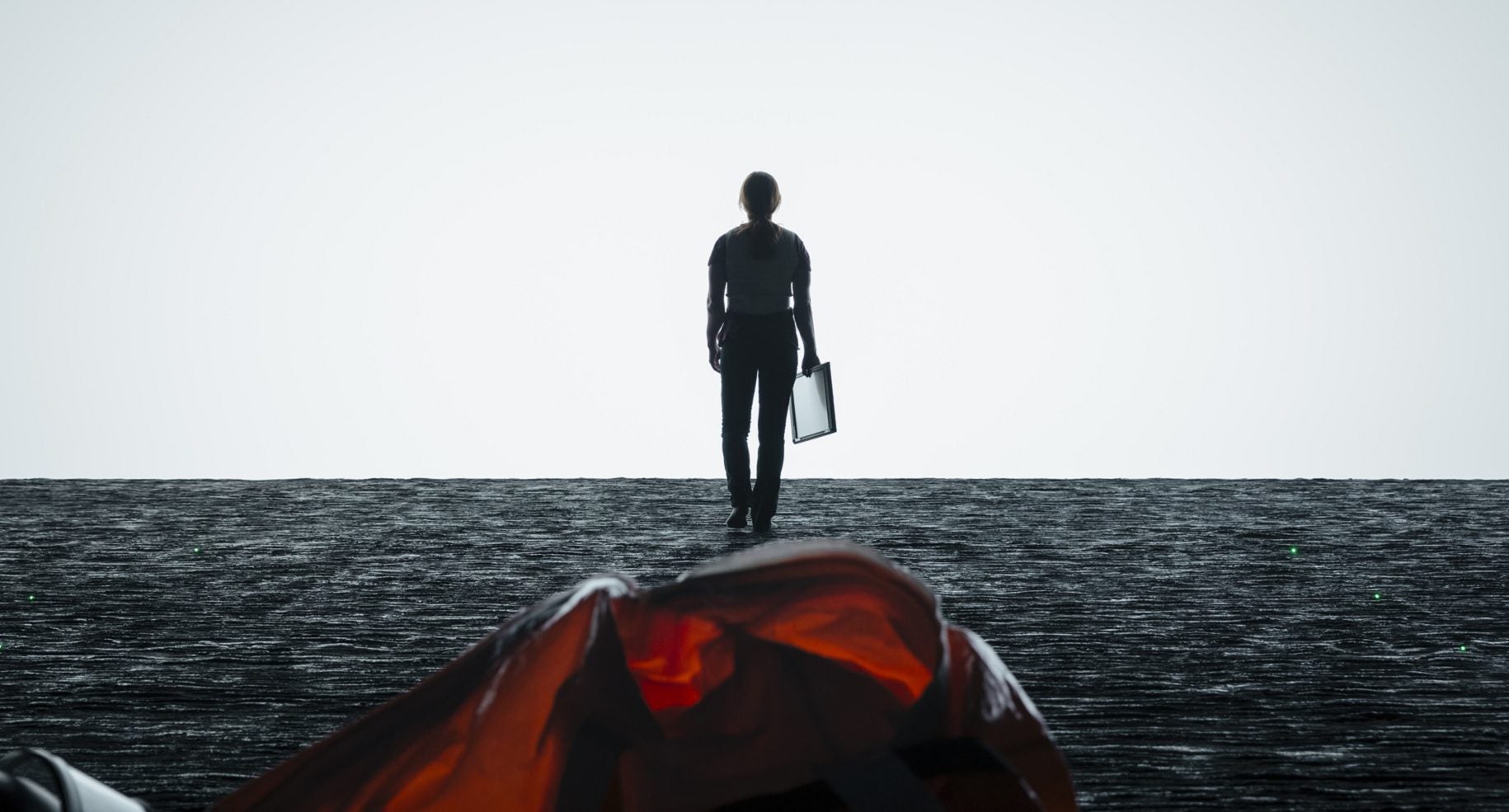The genius, game-changing twist of “Arrival” should win it the Oscar for best picture
This story contains spoilers.


This story contains spoilers.
Arrival was not supposed to work.
Adapted from the novella Story of Your Life by Ted Chiang, about a linguist who decodes an alien language, Eric Heisserer’s script was too intricate, too cerebral to interest studio executives. He shopped his screenplay around Hollywood for years before he found producers to champion the project. And only after another few years of re-working the script did it land on director Denis Villeneuve’s desk, who turned it into the Oscar-nominated film Arrival for Paramount Pictures.
The fact that Villeneuve’s Arrival—a heady sci-fi studio film with a female scientist as its main character—was nominated for the Oscar for best picture at all is worth celebrating. (Heisserer was also nominated for his adapted screenplay.) It won’t, however, win the night’s biggest award. Betting sites put the film’s odds of winning at around 100 to 1, far behind the two favorites, La La Land and Moonlight.
But that matters not. Because against the odds, Arrival works. One could name several different reasons for its critical and commercial success: Amy Adams’s sublimely understated performance; Jóhann Jóhannsson’s cryptic, alluring score; Bradford Young’s stunning photography; or editor Joe Walker’s scrupulous puzzle-playing, to name only a few.
Arrival‘s ultimate triumph, though, is how all of these things, together with the conceptual consistency of Villeneuve’s filmmaking, combine to pull off one of the most remarkable plot twists in cinema history.
It’s easy shorthand, but to call what happens toward the end of Arrival a “twist” is a disservice to its genius. Film twists often materialize out of thin air, tricks or random reversals inserted purely for shock value. The ending of Arrival doesn’t shock so much as it re-contextualizes the entire experience of watching the film. It represents a paradigm shift in the story: Villeneuve and company change the game right in front of your eyes, and you don’t realize it until the exact moment that you need to.
In the beginning of the film, we see Louise Banks, the linguist played by Amy Adams, caring for her young daughter, who’s dying. Throughout the film, Louise dreams of her daughters death, the flashbacks of a grieving mother. Of course, it’s not until the climax of the film does Louise (and, thus, the viewer) recognize that these aren’t flashbacks but flashforwards to the tragic story of a life yet lived, that of her future daughter. Studying the extraterrestrial language, she learns, has re-wired her brain to perceive time nonlinearly, just as the aliens do.
This actually isn’t the first time that this magic trick of storytelling has been performed on screen. But it has never been executed so beautifully. And it’s certainly never been bound so closely to the meaning of the film or the experience of watching it.
A masterclass of foreshadowing presages the final reveal. The best twists, as I’ve written before, must have breadcrumbs laid out for the viewer to find—but they should be more apparent the second time around than during the initial viewing, almost as if you get a special pair of glasses to see them, after you watch the film once.

Allusions to Arrival‘s nonlinear narrative and the circular nature of its storytelling are present in every aspect of the film. Jóhannsson’s enchanting score contains musical palindromes—vocal patterns that repeat backwards and forwards. (Hannah, the name of Louise’s daughter, is also a palindrome.) The set design of Louise’s home, the university where she teaches, and the interior of the aliens’ ship all look like one another.
“You can see elements of the horizontal ship chamber where Louise communicates with aliens reflected in her house and in the classroom, ” production designer Patrice Vermette told Vanity Fair. ”For Louise, the idea of the chamber was pre-conveyed in her world.” Villeneuve also told the set designers to incorporate circularity into their designs whenever they could “without making it obvious,” Vermette said.
One of the most famous principles of drama is “Chekov’s gun,” which states that each element of a narrative, however small, must be important to the story. “One must never place a loaded rifle on the stage if it isn’t going to go off,” the Russian writer Anton Chekov, is believed to have said.
These hints at the interrelation of present, past, and future don’t just factor into the story of Arrival (and thus fulfill Chekov’s principle)—they are the story. In the film, language literally changes the way Louise can perceive the world. That process is mirrored in how the “twist” and the visual language of cinema alter your perception of events as the movie watcher.
In the video above, Evan Puschak of the popular YouTube channel Nerdwriter breaks down some of the brilliance of Arrival‘s storytelling technique. The language that the aliens gift to Louise echoes the “unique perspective a film can gift a filmgoer,” he says. Films, essentially, can guide us through time in ways our own reality can’t.
In a way, the alien language lets Louise see the story of her life as if she were watching a movie of it—capable of moving both backwards and forwards, knowing the ending before it happens but still choosing to see it through.
Arrival is a completely different movie the second time you see it, once you know which scenes take place when. More clues start to present themselves: Early in the film, Louise’s partner, a physicist (played by Jeremy Renner), reads from her book about linguistics. “Language,” he recites, “is the first weapon drawn in a conflict.” Later on, Louise translates a message from the aliens: “Offer weapon.” The humans think they’re being threatened with a literal weapon, but remember—what’s the first “weapon” drawn in a conflict? Why, language, of course. The aliens were merely offering humanity the gift of their all-seeing language.
Louise and Ian, the physicist, nickname their two alien counterparts Abbott and Costello, a clever reference to the duality of meaning for anyone familiar with the “Who’s on First?” comedy routine by the legendary duo. It seems obvious in retrospect, but the first time around, even the most discerning of viewers are not equipped to notice clues like that, without, of course, the gift of knowing the future.
It’s rare, but not unprecedented, for a plot twist to double as a paradigm shift. Christopher Nolan’s Memento did it. M. Night Shyamalan’s The Sixth Sense did it too. What sets Arrival apart is how the game-changer is also the central theme of the film—that how we perceive the world is defined by how, and with whom, we communicate.
It would all fall apart without Denis Villeneuve’s impeccable eye for detail. Arrival is a film by a filmmaker refreshingly in total command of his craft. Villeneuve knows precisely what he intends to convey to the viewer, and with the help of actors, writers, editors, musicians, cinematographers, and set designers committed to that singular vision, he delivered the most rewarding cinematic experience of 2016.